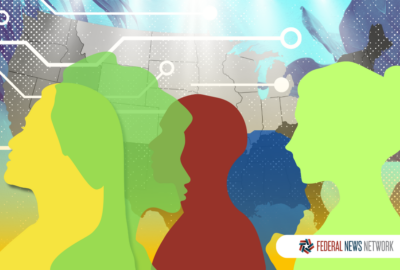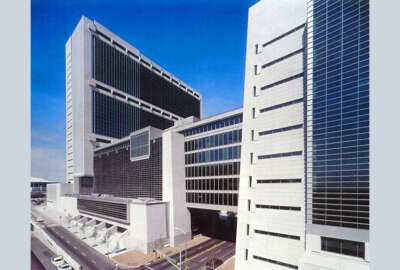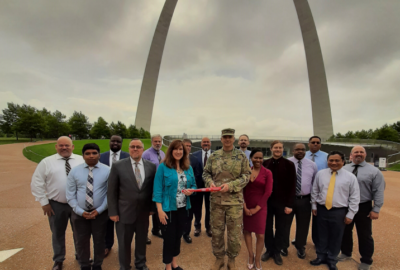Blue crabs and brownstones: The Eastern Region’s FEBs
Here’s who is works for the federal government in the eastern region. See what the leaders of Federal Executive Boards in different eastern cities had to say.
From Feb. 12-16, Federal News Network will, day by day, dive into the details of each of the four Federal Executive Board regions currently operating across the U.S. On top of featuring the work and plans of each of the boards, we’ll take a closer look at the path that lies ahead for FEBs. Stay tuned for more!
Along the east coast, it’s no surprise that you’ll find high concentrations of federal employees working in Maryland, Virginia and Washington, D.C. According to the numbers, those are the top three states for feds in the eastern region.
But the seven Federal Executive Boards (FEBs) in the east, outside of D.C., are doing critical work every single day. With most just a short drive, train ride or flight away, FEBs in places like New York City, Pittsburgh and Philadelphia may have a perspective more closely tied to the DMV. But the uniqueness of each area mirrors the vast diversity of the federal workforce on the whole.
Regional employee demographics:
Here’s who is working for the federal government in the East — and scroll down further to see what a few FEB leaders in different eastern cities had to say:
The Eastern Region’s FEBs:
Click an FEB link to travel down the page:
Pittsburgh
New York City
Philadelphia
Baltimore
Newark
Note: Responses from FEBs have been edited for length and clarity.
The Steel City: Pittsburgh’s FEB
By: Michael Horvath, Pittsburgh FEB chairman | Return to the top
Why is your local FEB important to federal employees working in your region?
The Pittsburgh FEB serves over 20,000 federal employees in Western Pennsylvania and West Virginia. Pittsburgh FEB’s main programs include professional development, employee recruitment and retention, emergency management and employee recognition. We provide in-person and virtual opportunities for networking between agencies and highlight achievements of the federal workforce in our area. The programming lift is especially important for midsize and small agencies that require collaborative engagements to meet critical operational goals.
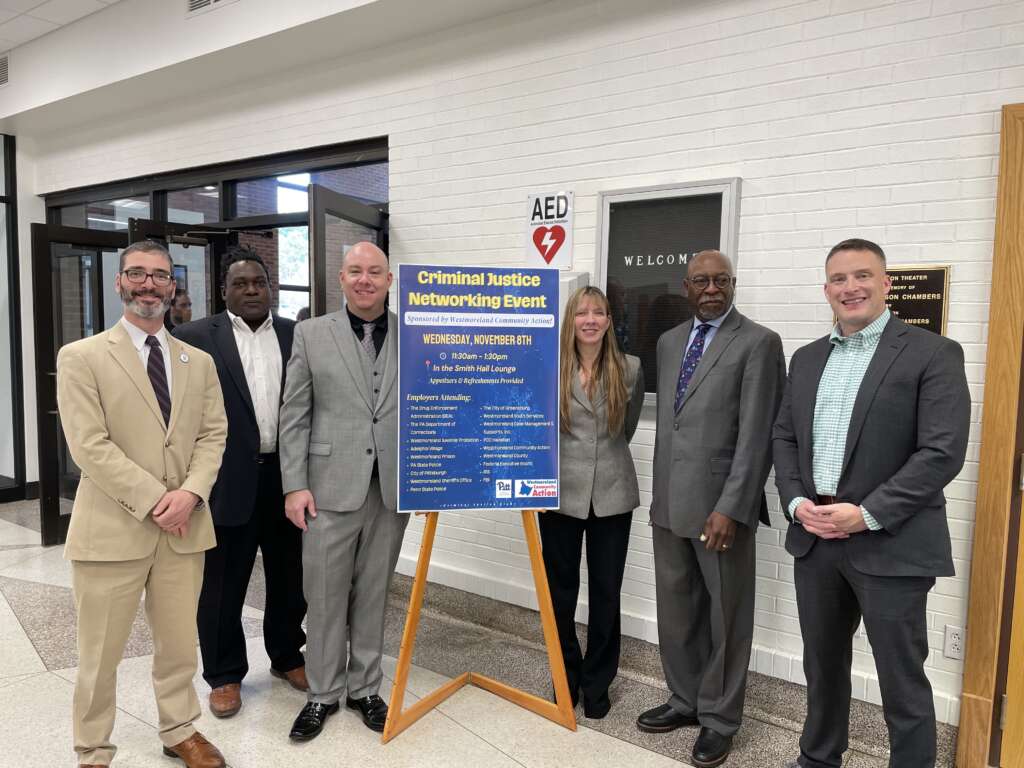
What does your local FEB hope to accomplish over the next year?
The Pittsburgh FEB is looking forward to hosting an Excellence in Government Awards program as part of Public Service Recognition Week in May 2024, following a pause in 2023. We will be coordinating and promoting professional development opportunities, such as the Gettysburg: Beyond the Battle residential leadership seminar for supervisors and managers. We anticipate participating in numerous public service career fairs at colleges and universities as well as hosting information sessions where interested individuals can hear directly from federal employees about their day-to-day work and the benefits of federal service. We hope to grow our footprint to reach federal agencies not previously covered by an FEB and ensure federal connectivity across the field.
What makes your geographical region a unique place for federal employees to work?
Western Pennsylvania and West Virginia are a common dividing line for federal jurisdiction, with Ohio frequently falling into another federal agency region. Pittsburgh is closer in proximity to Cleveland than to Philadelphia and intra-agency relationships with our counterparts in our area are critical. We see this frequently with emergency management, where Pittsburgh agency devolution sites are often in Cleveland or Columbus.
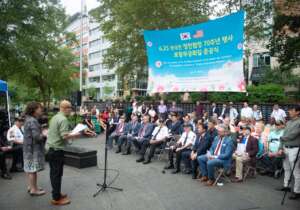
Our jurisdiction also offers affordability and access to natural resources. The cost of living in Western Pennsylvania and West Virginia is lower than the national average. Urban areas offer a variety of amenities, from museums to performing arts. If you are interested in outdoor recreation, you will find some of the country’s best hiking, biking and water sports.
What do you wish people understood better about the impact of federal employees’ work in your area?
I think it is a common misunderstanding that federal employees work in Washington, D.C. In 18 years of federal service, I have worked for two agencies in Western Pennsylvania: U.S. Citizenship and Immigration Services (USCIS) and the Department of Housing and Urban Development (HUD). In both roles, I have frequently been told, “I didn’t know that there was an office in Pittsburgh or Western Pennsylvania.” I work daily to change that paradigm. Federal employees are your neighbors, whose families have deep roots in our area. We have many veterans who returned home after service to raise families. They have great knowledge and understanding of our communities and needs, and provide a face to the public to ensure agencies deliver on their wide-ranging missions, from supporting small business to enhancing the workforce, supporting health initiatives, food safety and affordable housing, and many other functions that impact our daily lives.
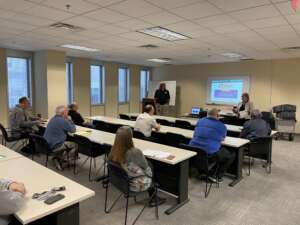
What’s a must-try food or activity for anyone visiting the area, and why?
Pittsburgh is “Almost Famous” for Primanti Bros. and their sandwich that comes with french fries on the sandwich. During the Lenten season, you will find many fire halls, social clubs and churches holding fish fries, with many claiming to be the best in town. If you are a fan of the great outdoors, Ohiopyle State Park is a must-see, along with Frank Lloyd Wright’s “Falling Water” and “Kentuck Knob.” Pittsburgh is also home to the Steelers, one of only two NFL teams to have won six Super Bowls!
What are the benefits and challenges of your distance from D.C.?
Our jurisdiction is a one-hour flight or a four-hour drive from D.C. That makes us ideal for field visits for senior and political leadership looking for a quick, high-value engagement. There is frequently a pull to D.C. for some staff because it offers a greater variety of job and promotional opportunities, and that can impact job turnover in our area.
The Big Apple: New York City’s FEB
By: Dennis González, New York City FEB chairman | Return to the top
Why is your local FEB important to federal employees working in your region?
In keeping with the greater mission of the FEB national network, the New York City FEB plays an important role in bringing together federal agencies and employees in this region around issues and items of common interest and concern. We provide a forum for the exchange of ideas and information that help regional federal executives better serve our constituents and facilitate the continuous professional development of our federal workforce.
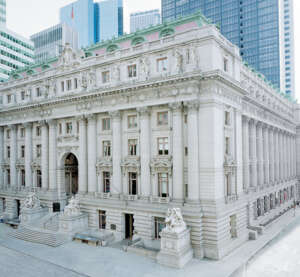
What does your local FEB hope to accomplish over the next year?
In this post-pandemic environment, we want to make sure that our federal workforce is equipped with the knowledge and resources to ensure a balanced work-life experience and to address professional and organizational challenges and needs. We look forward to continuing offering professional development training and workshops throughout the year, and to host our annual awards ceremony — because it’s essential that we take the time and make the effort to recognize and reward the excellence of our federal employees.
What makes your geographical region a unique place for federal employees to work?
As the “capital of the world,” and the financial and media center of the nation, New York City provides enormous opportunities as well as huge challenges for our federal workforce. We serve the most diverse constituency in the country, who depend on the federal government to help them address complex issues related to health, security, immigration and many other vital areas of service.
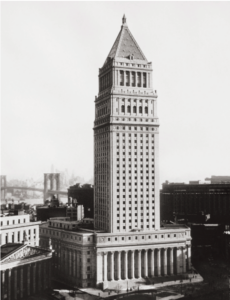
What do you wish people understood better about the impact of federal employees’ work in your area?
We are committed to dispelling the misconception that federal employees in the NYC area are dispassionate bureaucrats. Our federal employees are hard-working, committed and dedicated public servants. We are proud of the work we do, and we are devoted to our mission and the people we serve.
What’s a must-try food or activity for anyone visiting the area, and why?
NYC and the surrounding areas are blessed with some of the most iconic historical landmarks in the U.S. As this country’s first capital, visitors can explore places and things that helped form our federal government. In addition, many of the great museums, galleries and memorials in the world are located in NYC. Who can visit NYC and not see that towering symbol of freedom — the Statue of Liberty — or visit the cradle of our rich immigration history – Ellis Island? As the financial center of the world, what can be more exciting than the NYC Stock Exchange and Wall Street? And if one wants to feel like you’re on top of the world, a visit to the top of the Empire State Building or One World Trade Center are a must-do. New York City is a truly unique and special place!
What are the benefits and challenges of your distance from D.C.?
Thanks to NYC’s unique position as the media center of this country, we often receive visits from the President and vice president, as well as most of our departmental cabinet secretaries and national agency administrators. These visits are most beneficial to promote the work we do and to bring attention to the unique needs of our federal workforce and the challenges of the constituency we serve.
The City of Brotherly Love: Philadelphia’s FEB
By: Stephen Millen, FEB eastern region program director | Return to the top
Why is your local FEB important to federal employees working in your region?
The Philadelphia FEB serves over 45,000 federal employees in the Delaware River Valley. Our main programs include professional development, employee recruitment and retention, emergency management and employee recognition. We provide in-person and virtual opportunities for networking between agencies and highlighting achievements of the federal workforce in our area. The programming we offer is particularly important for midsize and small agencies that require collaborative engagements to meet critical operational goals.
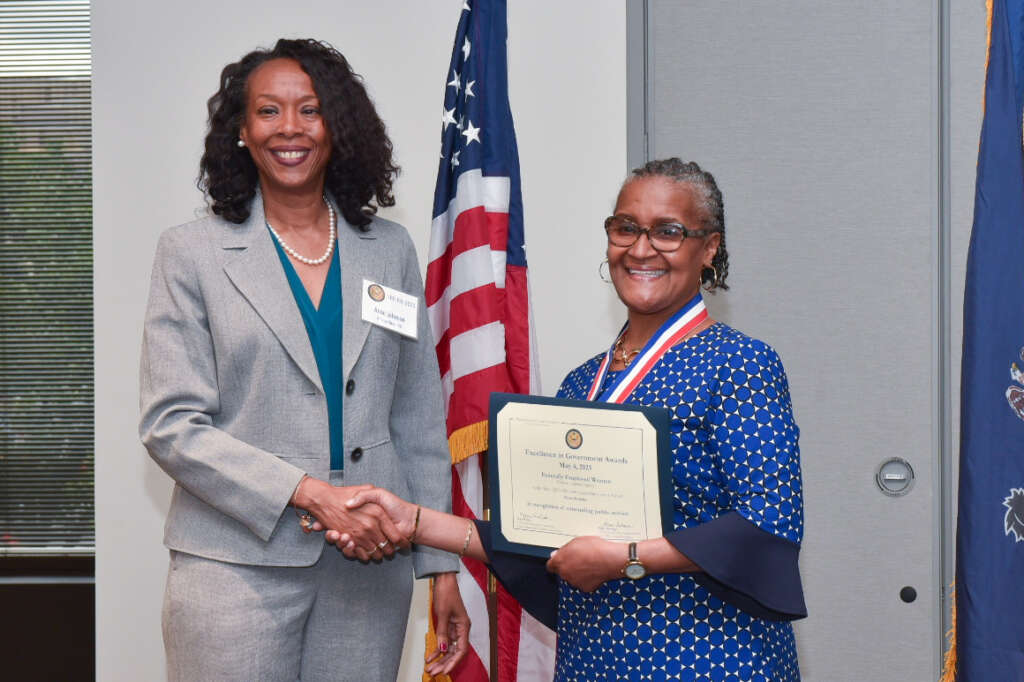
What does your local FEB hope to accomplish over the next year?
The Philadelphia FEB is looking forward to working closely with other FEBs in our geographical area to coordinate our outreach into our communities, drawing on resources from a larger pool. In addition to collaborating with the Pittsburgh and Baltimore FEBs in previous years, we are expanding our network to also work with FEBs in New York, New Jersey and New England. This new virtual world that the COVID-19 pandemic required us to embrace has opened up opportunities for us to be more dynamic, flexible and creative in helping federal agencies with their needs this year.
What makes your geographical region a unique place for federal employees to work?
Philadelphia is uniquely situated geographically, making it ideal for federal employees. Many federal agencies have significant footprints in Philadelphia and within a few hours of the city. We are only 2.5 hours from Washington, D.C., two hours from Baltimore, Maryland, and 1.5 hours from New York City. Each of these metropolitan areas have large numbers of federal employees and also individually unique restaurants, entertainment and other leisure activities. Our location makes us extremely attractive to anyone seeking work in the federal government because of our geographic proximity to these cities to the north and south of us.
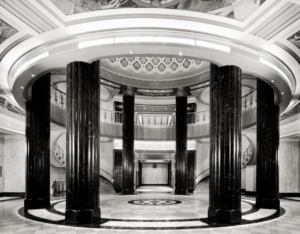
What do you wish people understood better about the impact of federal employees’ work in your area?
With 45,000 federal employees in Philadelphia, people should know that your next door neighbor is likely to be a federal employee. This is a big small-town, where the federal community is an integral part of the fabric of our city. And unlike Washington, D.C., most Philadelphia federal employees live within the limits of the city. So we are part of our city. We understand it, participate in it and love it.
What’s a must-try food or activity for anyone visiting the area, and why?
Philadelphia is known for the Philly cheesesteak. It is an iconic sandwich in Philadelphia. And if you ask 10 people where to get the best cheesesteak, you will probably get 10 different answers. But that is the beauty of the sandwich. No matter where you get one, the marriage of cheese and thinly sliced beef is a canvas for any great sandwich restaurant to make it their own. They are all delicious.

What are the benefits and challenges of your distance from D.C.?
Our proximity to Washington, D.C., makes it possible for Philadelphia federal employees to easily go to meetings at their headquarters and engage with fellow employees at their agencies. No planes are required, and hotels are only needed if the meetings you are attending in D.C. start very early, end very late or stretch out multiple days.
Charm City: Baltimore’s FEB
By: Craig Blango, Baltimore FEB chairman | Return to the top
Why is your local FEB important to federal employees working in your region?
The FEB serves as a force multiplier providing outreach and extension into the local community. The FEB convenes local leaders to provide opportunities to connect with one another and discuss shared challenges. Additionally, through these interagency, intergovernmental and community relationships, we can leverage subject matter experts or assist in relaying information relevant to multiple agencies.
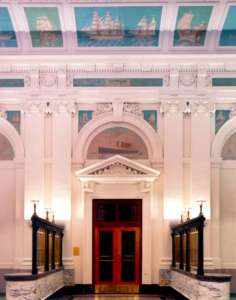
What does your local FEB hope to accomplish over the next year?
Identify and scale programming valuable to the federal government and non-government communities across geographic areas and agency missions.
What makes your geographical region a unique place for federal employees to work?
Our proximity to the National Capital Region (NCR). We are also home to several nationwide and worldwide headquarters outside of NCR. Maryland also provides access to a range of coastline, farmland, mountainside and vast historical sites. Whether current or prospective feds are seeking an urban, rural or coastal setting, work-life integration is only a short commute away.
What do you wish people understood better about the impact of federal employees’ work in your area?
The federal government is the largest employer in this area, contributing to the local economy as well as providing a range of opportunities for those embarking on their first or second career. Discovering the array of agencies, missions and occupations provides mobility into the government sector within a singular agency or across agencies. To quote the Maryland Department of Commerce, “Maryland is home to more than a dozen military installations, over 60 federal agencies and twice as many federal labs than any other state in the nation.”
What’s a must-try food or activity for anyone visiting the area, and why?
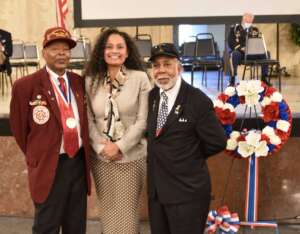
The city is rich with historic sites including Inner Harbor, Fort McHenry, the Maryland Zoo and the Reginald F. Lewis Museum. Aside from its historical significance, Baltimore is also known for its delicious seafood and the Chesapeake Bay is a popular spot for crabbing and fishing. Some of the popular seafood locations for crab cakes include Jimmy’s Famous Seafood, Pappas Restaurant and G&M’s. Other places to explore include the Baltimore National Aquarium, which delivers a meaningful experience through its living collection of more than 20,000 animals from more than 800 species of fish, birds, amphibians, reptiles and more. The Babe Ruth Birthplace Museum is dedicated to preserving, exhibiting and interpreting the historic legacy of George Herman “Babe” Ruth and all Maryland sports. Camden Yards is the home ballpark of the Baltimore Orioles, and the first of the “retro” major league ballparks constructed during the 1990s and early 2000s. Fell Point is a historic, waterfront neighborhood in Baltimore. One of the oldest neighborhoods in Baltimore, Fell’s Point was once a bustling shipbuilding port, and has served as the home to jazz singer Billie Holiday and abolitionist Frederick Douglass. There are so many things to see, eat and do while walking through the historical neighborhood. Baltimore is 31 miles away from Annapolis, Maryland, home of the U.S. Naval Academy and the State Capitol, which you can tour.
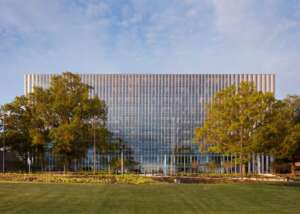
What are the benefits and challenges of your distance from D.C.?
Our access to additional senior leaders and subject matter experts is a tremendous asset, especially in our programming, to showcase a variety of leaders and pathways to leadership. From our “Executive Women in Motion” program, to our outreach to local colleges, universities and middle and high schools, as well as outreach to active-duty military members, military spouses and veterans, the diversity of agency missions, individuals and the workforce is in the spotlight and ever-growing. One of the challenges is distinguishing the economy, communities and infrastructure from inside the beltway, to outside the beltway. The federal presence in the greater Baltimore area has been defined as Baltimore City and the eight surrounding counties. While you will find a densely populated downtown metro area, the federal presence and career opportunities can be found in other areas beyond downtown Baltimore — to include several military bases and the U.S. Coast Guard Yard — across northern and central Maryland.
Brick City: Newark’s FEB
By: Alejandro De La Campa, Newark & New York FEB executive director | Return to the top
Why is your local FEB important to federal employees working in your region?
The Newark and New York FEB is proud to be one of the first Federal Executive Boards created following President Kennedy’s executive order in 1961, and we are proud to form part of the robust FEB national network. We serve as a catalyst for communication, coordination and collaboration among federal offices across the greater New York City area. This FEB represents over 60 federal agencies located in the five boroughs of New York City (Bronx, Brooklyn, Manhattan, Queens, Staten Island), the two counties of Long Island and the Hudson Valley. We also include the Newark Northern Metropolitan New Jersey area.
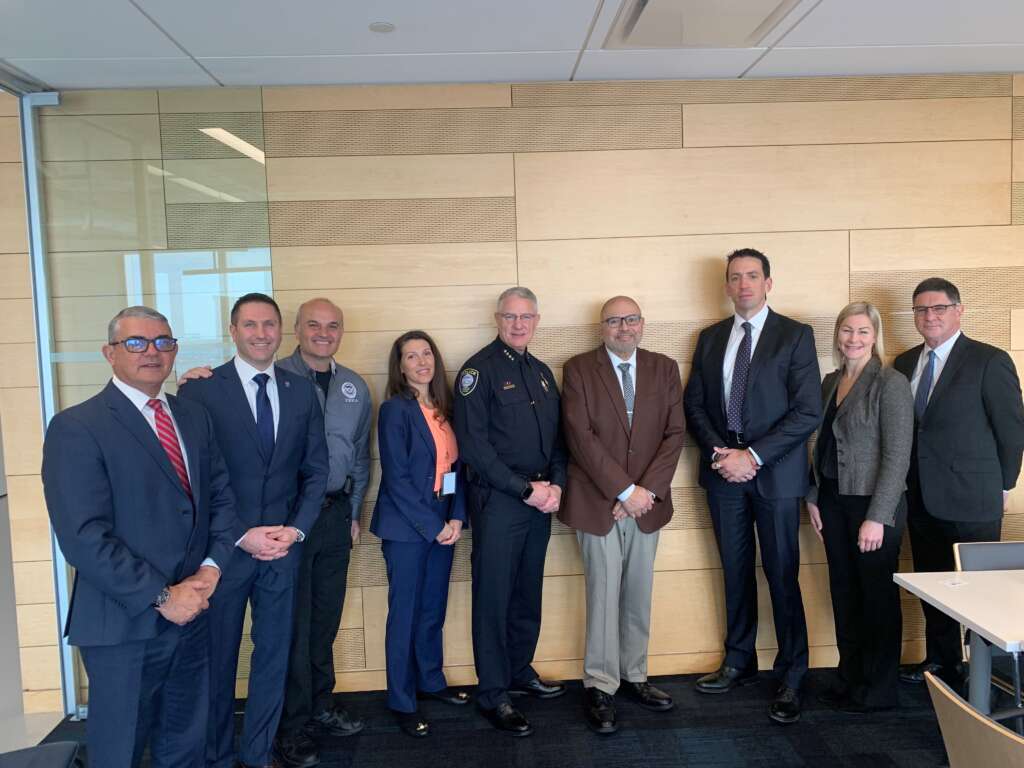
What does your local FEB hope to accomplish over the next year?
For fiscal 2024, now that we have been able to create solid Newark and New York FEB memberships with over 150 members from over 60 federal agencies, we propose the following goals and objectives: Solidify the board membership and continue promoting emergency preparedness, continuity of operations (COOP) training, workforce development and strategic partnerships development; continue with the dissemination of the weekly bulletins for both FEBs; continue sponsoring webinars, trainings and other activities for the benefit of federal employees; conduct four quarterly FEB meetings for Newark and New York City; enhance the diversity, equity, inclusion and accessibility (DEIA) awareness for all FEB agencies in the area; and further cultivate the New York and New Jersey FEB partnership.
What makes your geographical region a unique place for federal employees to work?
The Newark and New York areas have one of the most dense populations of federal agencies and employees outside of Washington, D.C. We proudly represent over 50,000 dedicated and committed federal employees. The Newark and New York areas are epicenters of economic, transportation and general federal government activity for the United States. Because of this, and due to the close proximity and the tremendous interdependence within the areas covered by the Newark and New York FEBs, the FEBs are extremely important to the federal agencies and employees in the area.

What do you wish people understood better about the impact of federal employees’ work in your area?
The Newark and New York FEBs perform highly valuable functions for this federal community, such as: a means of communication and collaboration among federal agencies to advance emergency coordination, continuity of operations and crisis management throughout this region; promote professional development of federal employees, and recognize and highlight the excellence of our federal workforce; and federal representation and involvement within the New York community.
As an example, we conducted a continuity of operations (COOP) table top exercise on August 17, 2023, with the participation of over 30 federal, state and local agencies, including the FBI, U.S. Secret Service, Coast Guard, New York Police Department (NYPD) and the Department of Homeland Security, among other agencies.
What’s a must-try food or activity for anyone visiting the area, and why?
The Newark and New York areas have thousands of restaurants and places to eat. The cuisine of Newark and New York comprise many cuisines belonging to various ethnic groups. Almost all ethnic cuisines are well-represented in Newark and New York. Newark and surrounding areas are known particularly for Portuguese-inspired cuisine.
Places to visit include: Newark Basilica of the Sacred Heart; Newark Ironbound Neighborhood; Newark International Airport; Newark Museum of Art; Newark Feigenspan and Krueger-Scott Mansions; Statue of Liberty; The Empire State Building; Times Square; Central Park; The Metropolitan Museum of Art (The Met); The Museum of Modern Art (MoMA); 9/11 Memorial and Museum; and Rockefeller Center.
What are the benefits and challenges of your distance from D.C.?
Some of the benefits are that we are: A forum for the exchange of information between Washington, D.C., and the field about programs, management strategies and administrative challenges; a point of coordination for the development and operation of federal programs having common characteristics; a strategic partner, bringing agencies together and facilitating collaboration to achieve common goals; and a cost-saver to the federal government by providing affordable training to local agencies.
Copyright © 2025 Federal News Network. All rights reserved. This website is not intended for users located within the European Economic Area.
Drew Friedman is a workforce, pay and benefits reporter for Federal News Network.
Follow @dfriedmanWFED
Daisy Thornton is Federal News Network’s digital managing editor. In addition to her editing responsibilities, she covers federal management, workforce and technology issues. She is also the commentary editor; email her your letters to the editor and pitches for contributed bylines.
Follow @dthorntonWFED





